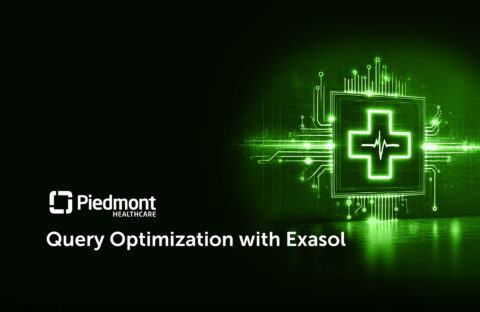In-Memory Database
What is an In-Memory Database?
An in-memory database (IMBD) stores data directly on the main memory (RAM) rather than being offloaded onto a hard drive. This means that whenever you query a database or update data in a database, you only access the main memory, so, it’s a lot faster, as there’s no disk to slow it down.
In-Memory Databases or Traditional Databases: Which is Better?
For a long time, the only way to handle large quantities of data was to store it on physical, disk-based hard drives. This offers certain benefits, namely that it’s a relatively inexpensive and secure way to store vast amounts of data. However, for modern tasks that require lightning-fast access speeds, such as real-time analytics or Business Intelligence (BI), traditional databases are woefully inadequate.
In an age when organizations need to make better and more predictive decisions, in-memory databases are essential for data analytics. The key lies in choosing an in-memory database designed for data analytics that’s powerful and flexible enough to adapt as your technology stack or data strategy evolves over time.
Performance can be enhanced even further with an in-memory relational database management system (RMDBS). By storing the most frequently accessed data on the RAM in organized columns and rows, complex data can be queried in the blink of an eye.
Discover more about the world’s fastest in-memory query engine.
How Does an IMDB Ensure Data is Safe?
Traditionally, databases have used the main memory (RAM) for short-term processing before transferring data onto a hard drive for long-term storage. Keeping relevant data permanently available on the RAM instead is an innovative way to drastically improve speed and performance. However, it’s not without its challenges.
Because the main memory is primarily intended for short-term memory, the probability of data loss is higher. This means that you need either non-volatile RAM (which doesn’t need a continuous power supply to retain data) or ongoing backup to another form of storage, such as the cloud.
Data within the in-memory database is updated in real time to ensure that the most relevant information is always available. Transaction logs and snapshot files are recorded so that the database can always be scaled back to an earlier version if required. In-memory databases can also support additional high-availability features such as replicated data across geographical regions and automatic failover. With a robust disaster recovery strategy in place, businesses can take full advantage of the blazing speeds of an IMDB without having to worry about losing data.
Key Advantages of Using In-Memory Databases
Lightning-fast queries
Undoubtedly the biggest advantage of in-memory database technology, and the reason it has been so widely adopted across multiple industries, is its unparalleled speed. By removing the need to retrieve data from physical storage, truly real-time analytics are made a reality: something that simply isn’t possible when using a traditional database.
High scalability and interoperability
An in-memory DB can be a highly effective solution for companies that need fast and straightforward scalability. There are two main ways IMDBs can scale with your needs:
- Vertical scaling: Adding more main memory to a single system
- Horizontal scaling: Distributing an IMDB across multiple systems
Data management solutions such as Exasol Espresso use horizontal scaling to offer maximum flexibility and speed when accommodating rapidly growing database systems. Capacity can be further augmented through integrated cloud environments, as well as traditional storage for less frequently queried data.
Reduce costs and improve energy efficiency
Although RAM is more expensive than traditional storage, an in-memory database can significantly reduce computing and infrastructure costs through improved performance. With the IMDB acting as a bridge between your data warehouse and BI interface, the most queried and relevant data is stored on the main memory and instantly available for real-time analytics. Offering an unparalleled price-performance ratio, the fastest in-memory database can improve performance by up to 80%, resulting in savings of up to seven-figures.
Who Can Benefit from an In-Memory Database?
As the amount of information that data-driven companies can access continues to grow exponentially, only the most efficient storage and querying solutions can deliver as required. In-memory databases allow numerous industries to make the most of real-time analytics and Big Data processing to improve outcomes, reduce costs, and gain an edge over competitors.
Healthcare
In-memory databases are helping to support better patient outcomes and optimize operations within the healthcare industry. In a field where a few seconds can make all the difference and having the most up-to-date information is crucial, the real-time data that an IMDB provides can quite literally be a lifesaver.
Financial Services
Being able to analyze data in real-time has several advantages for financial institutions. The ability to spot market trends and fluctuations before anyone else is a significant plus in a highly competitive field, while the analysis of transactions as they occur is crucial in preventing fraud.
Telecommunications
Effective long-distance telecommunications require high speeds and low latency. In today’s global economy, it is essential to instantly share data between teams and individuals worldwide, regardless of where the data is stored or the number of users accessing it simultaneously.
eCommerce
Access to the vast amounts of data that retail and eCommerce companies have on their customers is one of the key pillars of long-term success. With the world’s fastest in-memory database, Exasol delivers greater sales through product recommendations based on real-time shopping basket insights and market-leading BI.
In-memory databases offer unmatched benefits when it comes to speed, performance, and efficiency. However, they are not without their limitations, particularly when it comes to cost-effectively storing massive amounts of data. As a result, many companies benefit from a hybrid approach, with additional storage capacity provided by cloud computing or on-premises infrastructure.



